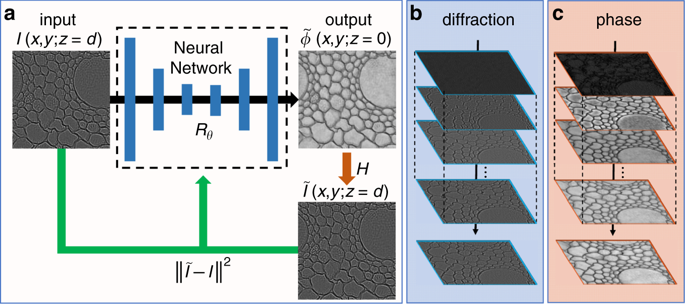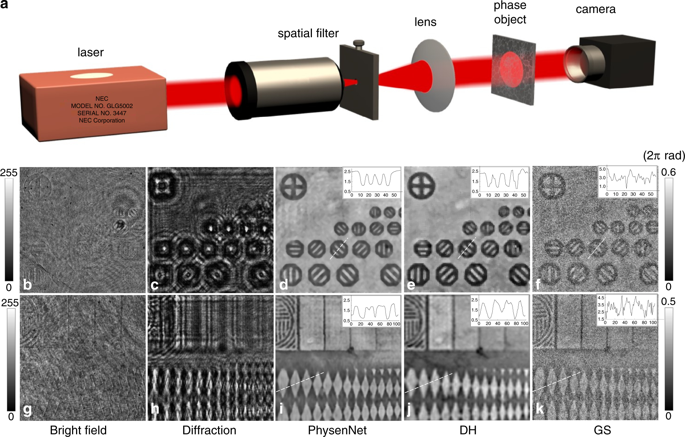Computational imaging (CI) techniques exploit optical device and calculation algorithms to reconstruct object information. A key goal of CI is to develop more advanced algorithms in order to simplify hardware equipment and improve imaging quality.
Deep learning, one of the most powerful algorithms, uses a deep neural network to learn from a large number of input-output data pairs so as to establish mapping relationships among data. It has been widely used for CI and has achieved state-of-the-art results in many imaging problems. However, most existing deep-learning-based CI methods face challenges in data collection and generalization.
In a recent study, investigators from Shanghai Institute of Optics and Fine Mechanics of the Chinese Academy of Sciences described how they combined an untrained neural network and physics knowledge to eliminate the limitations of deep-learning-based CI methods. The result was published in Light: Science & Applications.
“Our imaging method does not need a large amount of data to train a neural network. All it needs is the measurement of the object recorded by the detector and the physics model from the object to the measurement,” said Prof. SITU Guohai, leader of the research team.
The researchers demonstrated their technique on a lensless quantitative phase imaging problem, which requires reconstructing the phase information lost in the detection stage.
The new approach is based on a deep neural network (DNN), a multi-layer calculation model widely used to fit different mapping functions from a lot of training data pairs, and the free space propagation principle, which has been established by hundred of years of research.
The researchers turned to knowledge of the optical system to enhance the parameters’ optimization of DNN. They fed the measured intensity diffraction pattern to a randomly initialized DNN (untrained), took the output of the DNN as the estimation of phase information, and calculated the estimate of the intensity diffraction pattern starting from the estimated phase by the free-space propagation principle.
Then, the parameters in the DNN were updated to minimize the error between the measured and estimated pattern. Along with the minimization of error, the output of DNN also converges upon real phase information.
“While most previous deep-learning-based CI methods used a lot of training data to optimize the parameters in DNN, our approach exploits the raw measurement and the physical model,” said SITU. “It’s a general method that can be used to reconstruct different kinds of objects.”
The researchers tested their technique by using it to image a phase object. The new approach was able to resolve phase information using a single intensity diffraction pattern.
“The new approach for phase imaging is a single shot, non-interferometric method, which has great potential in microscopy and optical metrology. Also, a similar framework can be used in various CI methods provided that the physical model is known,” said SITU.
This work was supported by the Key Research Program of Frontier Sciences of the Chinese Academy of Sciences, the Sino-German Center, and the National Natural Science Foundation of China.

Schematic illustration of the pipeline of PhysenNet. (Image by SIOM) 
Experimental results. (Image by SIOM)
Article website:
https://www.nature.com/articles/s41377-020-0302-3
Contact:
Mr. CAO Yong
General Administrative Office
Shanghai Institute of Optics and Fine Mechanics, CAS
Email: caoyong@siom.ac.cn